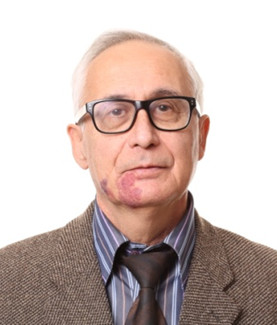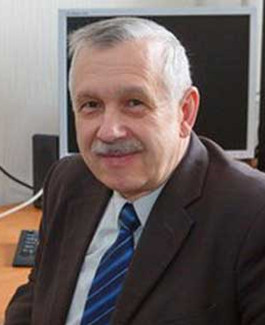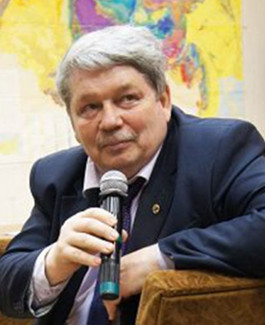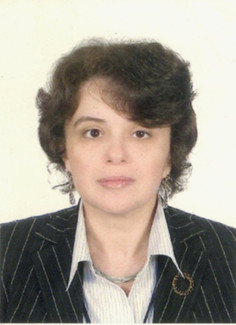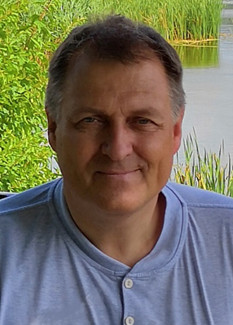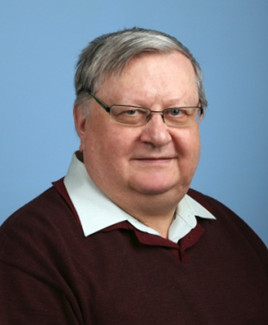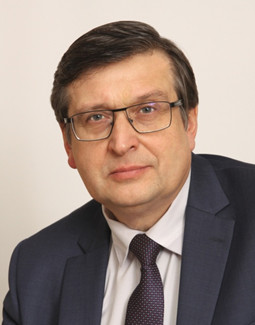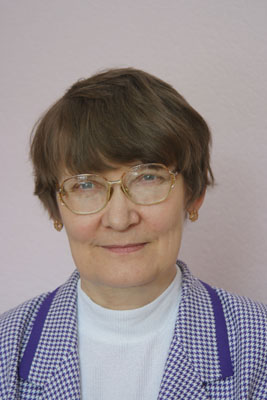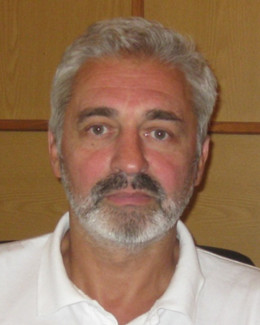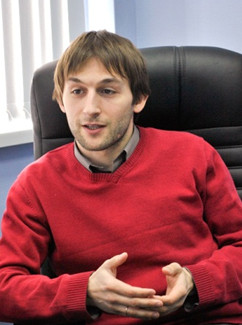Announcements of lectures of
School for Young Scientists “Monitoring of Natural and Technogenic Systems”, November 25 to 27, 2019, Perm
Shkuratnik Vladimir Lazarevich
Doctor of Engineering Sciences, Professor. One of the leading experts in the field of mining geophysics and geocontrol. Honored Worker of Science of the Russian Federation, Honorary Worker of Higher Professional Education of the Russian Federation, Honorary Builder of the Russian Federation, Laureate of the Prize named after Acad. N.V. Melnikov of the Russian Academy of Sciences for his works on the theory and methodology of geoinformative support of the integrated exploration of mineral resources, as well as the Prize named after Acad. A.A. Skochinsky for the development of methods for predicting dangerous dynamic phenomena in rock massifs. Member of the Executive Board and Chairman of the Geoacoustics Section of the Russian Acoustic Society.
Memory effects in rocks and their use for solving geocontrol tasks
Memory ”as a fundamental property of rocks and the effects of“ memory ”as manifestations of this property. Varieties, features, physical mechanisms and conditions for the formation and manifestation of the effects of "memory" of various physical nature in rocks. The acoustic emission effect of memory (AEEP) and the history of its study. Peculiarities of the formation and manifestation of AEEP in a complex stress state. Interference factors affecting the formation and manifestations of AEEP. Description of the main directions of practical use of memory effects. Methodological issues of using AEEP for assessing the stress-strain state of rocks in the massif and prediction of their disturbance. On possible interrelations of the effects of rock memory and the predicted signs of dangerous dynamic phenomena in the massif. The main trends of the further development of geocontrol methods based on the effects of "memory" of rocks.
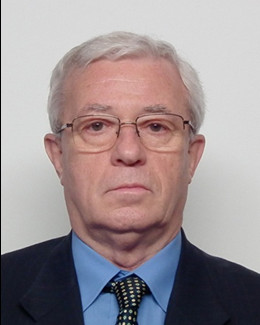 Professor Trampus Peter
Professor Trampus Peter
Рresident of the Hungarian Association for Non-Destructive Testing (MAROVISZ), and professor emeritus of the University of Dunaujvaros Hungary
Contribution of Non-Destructive Evaluation to asset management
In recent decades, enormous efforts focus on increasing the performance of engineering structures and components. Assets of high value and of high risk such as power and process plants, offshore platforms, bridges are ageing but there is a significant need for their further use. Materials ageing leads to gradual reduction of the safety margins of these structures and components. At the same time the general understanding on safety has been changing. Risk being acceptable by the society is decreasing, and this forces governments to render the safety regulations progressively more serious. Non-Destructive Evaluation (NDE) delivers an essential input to structural integrity analysis and thus it plays an important role in assessing safety of structures and components.
In the first part of the presentation the major trends characterizing the changes, i.e. the challenges will be shown. Among others development in structural integrity analysis, fracture mechanics, also the appearance of life management as an independent discipline as well as consideration of risk in a broader sense will be discussed. After that those elements of the technical development will be presented, which respond to the challenges triggered by the changes. Almost all of these can be connected to the development of information technology and micro- and nanoelectronics, and contribute to the improvement in flaw detection, characterization and sizing. Among solutions however there are some whose goal is the reduction in cost and/or examination time.
Special attention will be paid to the digitalization and its impact on NDE. In this context specialization of procedures, real-time quality control, on-line in-service inspection, NDE modelling and simulation, 3D visualization, big data management, proactive management of materials degradation, structural health monitoring will be presented. The presentation will also deal with the NDE in light of the Industry 4.0.
Examples will be selected from literature and from own research.
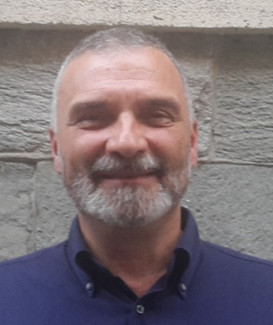 Professor Lacidogna Giuseppe
Professor Lacidogna Giuseppe
Confirmed Associate Professor DISEG Department of Structural, Geotechnical and Building Engineering Polytechnic University of Turin, Italy. Effective member of the College of Architecture, Effective member of the College of Engineering for the Environment and the Territory
Damage Monitoring in Civil and Monumental Masonry Buildings: An Acoustic Emission Analysis Approach
Historical masonry buildings often show diffused crack patterns due to different causes in relation to original function, construction technique and loading history. Non-destructive testing methods, and especially the Acoustic Emission (AE) technique, applied as in situ monitoring systems allow reliable evaluation of the state of conservation of these structures and its evolution in time. In this contribution different case studies are presented to show the AE technique capability on the assessment of damage evolution in ancient brick and stone artworks. All the analyzed structures belong to different historical periods of architecture, and represent remarkable sites of the Italian Architectural Heritage.
Vavilov Vladimir Platonovich
Doctor of Engineering Sciences, Professor, Head of the Laboratory of the Institute of Non-Destructive Testing at the National Research Tomsk Polytechnic University, Corresponding Member of the International Engineering Academy of Infrared Thermography (1996). Vladimir Platonovich is a laureate of the Russian Government Prize in Science and Technology in 2004, he is also a representative of the CIS countries in the European Working Group on Infrared Thermography EUROTERM, vice-president of the Russian Society for Non-Destructive Testing and Technical Diagnostics, a member of the International Academy of Non-Destructive Testing. He was awarded the medal of the Order "For Merit to the Fatherland" 2nd class for achievements in the development of science, education, training of qualified specialists and many years of fruitful work, the medal of the USSR Cosmonautics Society named after S.P. Korolev.
Infrared thermography: basic principles, equipment and applications
The development of physical principles for visualizing thermal (temperature) fields in the optical radiation range with wavelengths of 3-14 μm was a logical consequence of mankind's development of a wide range of electromagnetic radiation, from hard x-rays to radio waves. The fact of the existence of infrared (IR), or thermal, radiation has been known for a long time. However, practical progress in this area is associated with the production technology of IR detectors. For several decades, thermal imaging was based on the use of single IR receivers and two-coordinate scanning systems. In the last three decades, progress in this area is due to the emergence and sharp expansion of the range of matrix IR detectors, on the basis of which various models of the so-called FPA (Focal Plane Array) thermal imagers have been created. The generalizing technical characteristics of the best modern thermal imagers are as follows: temperature sensitivity up to 10 mK, the number of sensitive elements in the matrix is more than 1 million (more than 5 million pixels in the thermogram using special techniques), the recording frequency of thermograms is up to 1 kHz (in the “window” mode, up to several tens kHz). The increasing demand for such devices is associated with the fact that any kind of technical and, according to some assumptions, mental activities is associated with the processes of production, transmission, transformation and consumption of energy in various forms. These processes are accompanied by irreversible energy losses, often of thermal origin, which allows tracing and evaluation of the above processes by analyzing thermal fields.
This lecture is concerned with the physical principles of thermal imaging, modern thermal imagers, ranging from miniature modules to up-grade systems for scientific research, and also illustrates the main areas of application of infrared thermography:
- military and anti-terrorism applications, in particular night vision systems
- power industry;
- construction engineering;
- petroleum chemistry;
- non-destructive testing, primarily in aerospace engineering;
- scientific research.
A brief review of the IR thermography scheme is made with the emphasis on methodological measurement errors, the presence of which reduces the metrological data of the thermal imaging method.
Particular attention is paid to processing of long sequences of IR thermograms, which allows one to trace the dynamics of temperature fields and analyze the corresponding physical phenomena in the range of temperature amplitudes and time (phases).
Maslennikov Valety Bladimirovich
Doctor of Geological and Mineralogical Sciences, Professor, Corresponding Member of the Russian Academy of Sciences, Head of the Laboratory of Mineralogy of Ore Genesis at the Institute of Mineralogy, Federal Research Center of Mineralogy and Geoecology, Ural Branch of the Russian Academy of Sciences, specialist in the field of metallogeny, lithology, mineralogy, geochemistry and paleoecology of pyrite deposits. He was awarded the Prize of the Government of the Russian Federation in the field of science and technology (as part of a group) for creating the scientific basis for the development of the ore mineral and raw material base of the Urals, laureate of the B. Skinner international award of the Society of Economic Geology (SEG).
High-tech and toxic elements as indication of risks of mining out the ancient and contemporary pyritic deposits
Today, approximately half of the known gold-copper-zinc and polymetallic deposits of the pyrite family have been worked out. In rift systems and island-arc seas of contemporary oceans, such mining is only getting underway. At this stage, it is important to predict economic and environmental risks of mining new and existing pyrite deposits and ore processing. Modern pyritiferous ore-forming systems involve near-hydrothermal oases of life, represented mainly by endemic (one-of-a-kind) organisms. Enormous bio-productivity is inherent in some of the ore-forming hydrothermal sources, while a chaotic distribution of hydrothermal biota or complete infertility takes place in others. A similar picture is observed in ancient pyrite deposits. It was important to understand the reasons for the differences in biproductivity of pyrite deposits of different ore-formation types. The method of laser ablation inductively coupled plasma mass spectrometry revealed significant differences in the composition of sulfides of bio-productive and sterile pyrite deposits. It was shown that the former, associated with abundant basalts or serpentinites (East Pacific, Atlantic, Cypriot, and Ural types) are enriched in Fe, Co, Se, and Sn. Sulfides of the latter, in which the acidic volcanic rocks dominate the ore-bearing rocks (West Pacific, Kuroko, Baymak, Altai, and Iberian types), contain abnormal amounts of Tl, Pb, As, Sb, Cd, Ag, Au, Bi, Hg. Obviously, under conditions of hydrothermal emissions and submarine weathering of sulfide structures of the second type, toxic elements penetrate the environment impeding the development of hydrothermal oases. Moreover, when mining such contemporary pyritic deposits by mining companies (for example, Nautilus), it is common practice to discharge iron disulfides depleted in ore back to the sea. This is precisely iron disulfides and mainly their collomorphic faciess, losing stability in sea water, that serve as carriers of most toxic elements. It is certain that the oxidation of sulfide “tails” will lead to man-made ecological disasters in the oceans and seas (for example, in the Bismarck Sea) with the destruction of not only randomly distributed near-hydrothermal biota, but also the background communities of organisms, including those consumed by the human. The risks of developing such pyritic deposits on the continents are similar, but obviously less notable. On the other hand, highly toxic pyritic deposits are suppliers of many high-tech chemical elements. Mining companies should strike a balance between economic benefits and environmental risks of mining various types of pyrite deposits. In this regard, there is a strong need for constant monitoring of the involvement of new pyrite deposits in the processes of ore mining and processing.
Epstein Svetlana Abramovna
Doctor of Engineering Sciences, Professor, Department of Physics at the Scientific and Technological Institute of MISIS, Head of scientific and educational testing laboratory "Physical chemistry of carbons." Her work is focused on the study of the material composition, physical, physico-chemical and mechanical properties of carbons.
Problems of quality and safety control of coal and its mining and processing wastes
The technological and calorific value of coal is determined by a set of parameters, the control of which is carried out at the stages of geological exploration of deposits, coal mining, sorting, beneficiation, storage, etc. up to the final processing (coking, burning, briquetting, etc.). At the present time, along with the technological and calorific value of coal, it is important to control the content of their macro- and microelements, which can be concentrated in waste or released into the environment in quantities exceeding established standards. The conference report will demonstrate the main methods and means of monitoring the quality and safety parameters of minable coal and its mining and processing wastes. It will also survey foreign experience in the assessment of potentially hazardous elements in coal and wastes and adduces examples of assessing the coal mining and processing wastes in terms of their environmental impact as a result of appication of different recycling technologies. A brief review of methodological and regulatory documents, governing the quality and safety control of coal and its mining and processing wastes will be brought to audience’s notion at the end of the lecture.
Polyanskiy Vladimir Anatolievich
Doctor of Engineering Sciences, since 2019 Acting Director of the St. Petersburg Institute of Mechanical Engineering Problems, Russian Academy of Sciences, since 2012 Director of the REC at St. Petersburg SPU, Professor of the Control Systems and Technologies Department at St. Petersburg SPU.
Hydrogen monitoring of structural materials during their production and operation
Hydrogen is the most dangerous component of metals and alloys. This is due to the fact that its compounds can be found everywhere, and the level of maximum permissible concentrations of hydrogen (MPC) in metals is 0.0001%.
Such MPCs are outside the detection range for most modern analytical methods of determining the composition of substances. Therefore, very often brittleness, cracking, surface destruction, peeling of coatings and other types of damage induced by hydrogen are considered as purely mechanical failure under load.
At the same time, removal of hydrogen or blocking its internal diffusion brings faster and cheaper results than enhancing the safety factor or using new methods for strength calculation.
The methods of hydrogen diagnostics of metals have been applied for more than a hundred years; it began with measurements of the concentration of hydrogen in steel castings, but the effect of hydrogen on the properties of materials is constantly increasing. Over the course of the last century, MPCs decreased by about 100 times. This poses new challenges to manufacturers of diagnostic equipment, to those who are developing methods for hydrogen diagnostics, and to engineers who must develop new methods for removing hydrogen and calculating its effect on the mechanical properties of materials at each upsurge of technology.
The lecture gives a survey of current problems related to the effect of hydrogen on the mechanical properties of materials and methods of their solution.
Korotkiy Aleksandr Illarionovich
Doctor of Physical and Mathematical Sciences, Professor, Head of Department of Applied Problems of the Institute of Mathematics and Mechanics, Ural Branch of the Russian Academy of Sciences. A follower of academician Yu. S. Osipov. Areas of scientific interest include the qualitative theory of partial differential equations, control of distributed parameter systems under uncertainty or conflict, finite-dimensional approximation of optimal control problems, investigation of the correctness of control problems, direct and inverse problems of controlled systems with distributed parameters, study of viscous fluid models, direct and inverse problems of viscous fluid dynamics.
Mathematical Modeling in Earth Sciences
Mathematical modeling is one of the main tools of gaining scientific knowledge in many sciences, including Earth sciences. The main idea underlying mathematical modeling in this area is to consider the object of research as an object of a continuous medium (viscous fluid). This hypothesis allows us to use mathematical models and methods of continuum mechanics to study the arising problems. Conceptual formulation of the problems lead to formulation of corresponding initial-boundary value problems for differential equations, which may be of interest not only to specialists of the corresponding profile, but also to theoretical mathematicians, calculators, and specialists in the interpretation and visualization of computation results.
Formulations of a few urgent problems and the corresponding results obtained on the topic under discussion are given below:
– Modeling of a number of direct and inverse problems of the dynamics of a highly viscous fluid with applications in geodynamics. Modeling of thermal convection in the earth interior (evolution of mantle plumes, immersion of lithospheric plates in the earth's crust and mantle). Modeling of the formation of sedimentary basins and their evolution. Modeling of salt tectonics and evolution of salt diapirs.
– Modeling of volcanic lava flows with breccias (crust particles) and without them. Various forms of currents and spatial distribution of breccias were obtained depending on the conditions on the surface of the relief, obstacles on the path of the lava flow, scenarios of the fall of breccias and their sizes. Methods and algorithms for solving inverse problems have been developed to determine the characteristics of the lava flow in the entire model region based on the measurements of temperature and heat flux on the daylight (observed) surface.
Makarov Aleksey Viktorovich
Doctor of engineering sciences, Head of Department of Materials Science M.N. Miheev Institute of Metal Physics of Ural Branch of Russian Academy of Sciences. Area of scientific interests – the study of structural mechanisms to improve wear resistance and hardening of metallic alloys by the creation of metastable and nanocrystalline states, development on this basis of effective methods of thermal, deformation and combined treatments, the use of electromagnetic non-destructive methods for the evaluation of wear-resistant and high-strength structures, for the control of wear resistance and mechanical properties of steels and alloys.
Advanced laser, deformation and combined methods for surface modification of metal alloys
Application of laser radiation in modern technologies for surface treatment of metal products (quenching, alloying, and cladding) and additive technologies for manufacturing products and coatings is considered. A new approach to the production of heat-resistant and wear-resistant chromium-nickel coatings by combined laser-heat treatment, including laser cladding and high-temperature annealing that forms the high-strength framework of coarse carbides and borides in the coating is proposed. Modern methods of surface deformation nanostructuring of metal alloys are described. Particular attention is paid to the use of nanostructural friction treatment with sliding indenters for hardening, increasing the heat resistance and tribological properties of steels of various classes and laser cladding. A new method of ultrasonic shock-friction processing is proposed. The formation of compressive stresses in the surface layer of pearlite steel during friction treatment and its effect on the surface resistance under cyclic contact loading are considered. The high potential of commercial utilization of nanostructural friction treatment in modern engineering production is demonstrated. The combined nanostructural treatments (friction treatment + annealing) of steels with martensitic and austenitic structures are proposed. It is shown that the saturation of austenitic Cr-Ni steel with nitrogen and carbon during subsequent low-temperature (at 350-400 ° C) plasma treatments is possible due to preliminary nanostructural friction treatment. The advantages of using the electromagnetic eddy current method for non-destructive testing of surface-modified metal alloys and coatings are demonstrated.
Lubimova Tatiyna Petrovna
Doctor of physical and mathematical sciences, Professor, Head of the Laboratory of Computational Hydrodynamics at the Institute of Continuous Media Mechanics UB RAS, branch of Perm Federal Research Center UB RAS. Honored worker of science of the Russian Federation. Member of the Working Group of the European Space Agency - diffusion in non-metallic mixtures. This team includes scientists from Belgium, France, Germany, Spain, Russia, Japan and Canada and is engaged in implementation of the DCMIX project, in the framework of which a series of experiments aimed to measure diffusion and thermal diffusion coefficients in three-component mixtures are conducted aboard the International Space Station.
Modeling of natural objects
The lecture is devoted to mathematical modeling of the hydrodynamic regimes of natural objects. It also covers the methods and results of modeling the processes of dilution and transfer of pollutants in large water bodies, the hydrodynamic processes occurring during river confluence, and the processes of washing out pollutants from contaminated water bodies during floods. One of the most common approaches to the disposal of excess brines of the potash industry involves the diversion of brines into surface water bodies in order to reduce the content of pollutants to an acceptable level due to dilution processes. Most of the recently developed dilution methods consider brines as neutral buoyancy media. However, the behavior of highly mineralized brines, characterized by increased density, is different from the behavior of media with neutral buoyancy, so traditional methods for calculating dilution processes turn out to be incorrect. This study presents a new approach to description of the processes under consideration. It involves construction of three-dimensional hydrodynamic models using non-hydrostatic approximation. Observations show that in some cases, for instance at a river confluence, very intensive mixing of waters takes place, and in other cases, the waters of the merging rivers retain their properties over a long distance even of tens of kilometers from the confluence. Mathematical modeling of the confluence of rivers with similar water properties within the framework of the full three-dimensional approach in a non-hydrostatic approximation indicates that the formation of secondary vortices in the cross section may cause a weakening in the transverse mixing. Three-dimensional numerical modeling for the case of confluent rivers with very different properties located in the backwater area provides evidence of formation of a significant vertical density inhomogeneity and a large-scale vortex of salinity and the resulting stable layered structure. These results are of fundamental importance for ensuring sustainable drinking water sources for Perm, since the main drinking water intake of Perm is located directly below the confluence of the Chusovaya and Sylva rivers, which are characterized by significantly different hydrochemical characteristics. At present, analysis of possible consequences of extremely high floods is becoming increasingly important. Mathematical modeling with a new approach that combines one-, two- and three-dimensional fully non-hydrostatic models shows that the settling ponds, sludge ponds and contaminated lakes located in the flood zone of water bodies are completely safe at low and medium flow rates, but when entering the flood zone they become a source of intense pollution, which significantly limits water use schedule.
Belyaev Aleksandr Konstantinovich
Doctor of Physical and Mathematical Sciences, Professor of the St. Petersburg Institute of Mechanical Engineering Problems of RAS, Member of the International Union for Theoretical and Applied Mechanics (IUTAM), member of the Council of the European Community of Mechanics (EUROMECH), foreign member of the Austrian Academy of Sciences, Honorary Doctor of Johannes Kepler University, Linz, Austria
Dynamics and stability of structures in the high-frequency region
The theme of the report is inspired by the fact that the methods of the traditional theory of structural vibrations cannot be automatically extended to arbitrarily high frequencies. A critical analysis is carried out in order to create adequate approaches to the problem of the dynamic behavior of structures. An approach is developed based on a high-frequency limit model of the dynamics of a deformable solid and a low-frequency model of thermodynamics. The phenomenological description of dynamics can be carried out using both the methods of continuum mechanics and methods of thermodynamics. Moreover, the simultaneous consideration of the mechanical and thermodynamic properties of objects is the sine qua non condition for adequate modeling.
Two approaches are introduced. In the framework of the first approach, the boundary-value problem of high-frequency dynamics is obtained from the boundary-value problem of continuum mechanics. It is shown that there is a critical frequency, the value of which is determined by the density of the spectrum of natural frequencies and structure damping. At frequencies exceeding the critical one, the structure exhibits properties of a mechanical system with a continuous spectrum of natural frequencies. The properties of high- and low-frequency vibrations are compared and three main reasons for a decrease in the amplitude of the propagating high-frequency vibrations in the structures are indicated. These are the resonant interaction of elements, dispersive scattering, and nonlinear internal friction. Hybrid methods allow combining the analytical and numerical methods of continuum dynamics used to describe local vibration in substructures with the methods of high-frequency dynamics. The cited example shows how to combine the finite element method, describing the low-frequency vibrations and the proposed method intended for the high-frequency part of the spectrum.
The second approach consists in the construction of a thermodynamic model, which allows both the discrete and continuum formulations. In the framework of the discrete description, a direct analogy between heat propagation and high-frequency vibrations is established. Generalization of the discrete scheme to continuum systems allows one to obtain the boundary-value problem of vibration conductivity. A few examples of solving the problem of vibration conductivity will be given.
Shlemba Ivan Sergeyevich
First Deputy General Director - Chief Structural Engineer of Inversion-Sensor LLC. Inversion-Sensor LLC is one of the leaders in the industry of fiber-optic monitoring systems in Russia.
Fiber Optic Sensors and Monitoring Systems
The lecture considers the basic physical principles of the operation of fiber-optic sensors and monitoring systems based on such sensors. The history of the development of sensors in the Russian Federation and the world is described. The application of systems in various industries, as well as the prospects for the development of new types of sensors and their applications are discussed.
